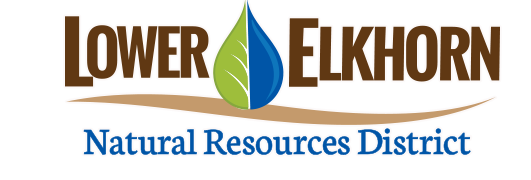All active wells which pump greater than 50 gallons per minute, within the Lower Elkhorn Natural Resources District (LENRD) boundaries, are required to have a flow meter installed.
The board decided at their January 24th meeting to move forward with sending out compliance notifications to the owners of irrigation wells impacted by the meter installation requirement who have yet to install a meter on their well.
LENRD General Manager, Mike Sousek, said, “We have been working diligently with well owners in our district to help them understand the installation requirements, and have provided financial assistance to many property owners to incentivize them to install water meters. Irrigation well owners had a deadline of January 1, 2018, while all other high-capacity well owners had until January 1, 2019 to get their meters installed.”
Sousek said, “We are here to answer your questions and develop a plan. We know there are cases where excavation may need to occur after the ground thaws, and we are working with those individuals. If you still need to install your meter, and you haven’t developed an installation timeline and plan with our staff, you will be receiving correspondence that articulates the next steps.”
Those individuals who receive a compliance notification in the mail will have until April 1, 2019 to install their meters, if they wish to irrigate in 2019. If meters are not installed by April 1, a notice of intent to issue a cease and desist order will follow. The letter will also provide reference to the consequences that could occur, if a well owner elects to ignore the requirement.
Sousek continued, “Some individuals may still be asking, why meters? The board has long supported the use of flow meters as another groundwater management tool by first adopting an installation requirement for any new high capacity well in July of 2007. After the drought of 2012, it became very evident that we needed to be proactive in the management of our groundwater since numerous in-season shortages were reported across the district, from all types of groundwater users (irrigators, public water supply systems, livestock, and domestic) with a high number of impacts being felt in Madison, Pierce and Wayne Counties during the 2012 irrigation season. Quantity management sub-areas were delineated within those counties which required the installation of flow meters on irrigation wells. More recent changes to the District’s Rules and Regulations for Groundwater Management made flow meter installation mandatory on all other high capacity wells effective January 1, 2018 for irrigation wells and January 1, 2019 for other types of high capacity wells located within the District. With meters installed across the district, we can be better equipped to handle a drought and share the water in a manageable way. Meters not only protect the farmers, the domestic users, and the cities, but they also protect the resource.”
Sousek said, “The meters protect current water users and allow for the development of new water users. They provide a fair and equitable measurement that will allow the LENRD to manage groundwater and provide policies that concentrate on sharing our most precious resource among all users. Should allocations ever be needed, all stakeholders will be treated equally through the meter program. Meters can also be a very effective learning tool in measuring how much water is needed to grow a crop.”
In other business, eight board members recently took the Oath of Office and settled into their four-year terms. They are: Chad Korth, Meadow Grove; Scott Clausen, Norfolk; Scott McHenry, Norfolk; Bob Noonan, Humphrey; Kurt Janke, Wayne; Dennis Schultz, Wisner; Roger Gustafson, Emerson; and Joel Hansen, Wayne.
The board also elected officers for 2019. Pictured here is the Executive Board: (back row, from left to right): Joel Hansen, Wayne, Nebraska Association of Resources Districts (NARD) Alternate; Dennis Schultz, Wisner, Past-Chairman; Scott McHenry, Norfolk, NARD Delegate; David Kathol, Norfolk, Treasurer. (Front row, from left to right): Matt Steffen, West Point, Secretary; Gary Loftis, Craig, Chairman; and Kurt Janke, Wayne, Vice-Chairman.
The next LENRD board meeting will be Thursday, February 28th at 7:30 p.m. at the LENRD office at 1508 Square Turn Boulevard in Norfolk. Stay connected with the LENRD by subscribing to their email list on their website.






